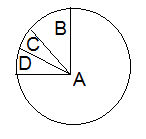The main difference between "Sixth Extinction" and the previous five extinctions is that the sixth extinction:
1. is mainly occurring on islands
2. is mainly affecting plants
3. is occurring at a faster rate
4. does not involve human activities
1. is mainly occurring on islands
2. is mainly affecting plants
3. is occurring at a faster rate
4. does not involve human activities
Which of the following does not contribute to the species diversity of the tropics?
1. Predictability
2. Predation
3. High productivity
4. Spatial homogeneity
The relation between species richness and area for a wide variety of taxa on a logarithmic scale is a:
1. rectangular hyperbola
2. straight line
3. sigmoid curve
4. sine curve
The hot spots of biodiversity conservation are characterized by:
1. High endemicity and high threat of extinction
2. Low endemicity and high threat of extinction
3. High endemicity and low threat of extinction
4. Low endemicity and low threat of extinction
Which of the following has maximum global biodiversity?
1. Angiosperms
2. Algae
3. Lichens
4. Mosses
What is applicable to both Lates niloticus and Lantana camara ?
1. They are on the verge of extinction due to over-exploitation by humans.
2. They are alien species that became invasive in certain environments causing threat to indigenous biodiversity.
3. They are mutualists and likely to undergo co-extinction in recent future.
4. They are keystone species and are vital to the stability of tropical ecosystems.
Givenbelow is the representation of the extent of global diversity of invertebrates. What groups the four portions (A-D) represent respectively ?

A B C D
(1) insects Crustaceans Other animal Molluscs
(2) Insects Other animal groups Crustaceans Molluscs
(3) Molluscs Other animal groups Crustaceans Insects
(4) Insects Molluscs Crustaceans Other animal groups
The term "The Evil Quartet" is related with:
(1) Four major causes of forest loss
(2) Four major causes of population explosion
(3) Four major causes of air pollution
(4) Four major causes of biodiversity losses
Given below are pie diagrams A, B and C related to proportionate number of species of major taxa of invertebrates, vertebrates and plants respectively. Critically study and fill in the blanks I, II, III and IV:
(1) I - Molluscs, II - Amphibians, III - Fungi, IV - Angiosperms
(2) I - Molluscs, II - Amphibians, III - Angiosperms, IV - Fungi
(3) I - Hexapoda, II - Amphibians, III - Fungi, IV - Angiosperms
(4) I - Turtles, II - Amphibians, III - Fungi, IV - Angiosperms
Conservation hotspots are best described as:
(1) Areas with large numbers of endemic species that are disappearing rapidly
(2) Areas where people are particularly active supporters of biological diversity
(3) Islands that are experiencing high rates of extinction
(4) Areas where native species are being replaced with introduced species







